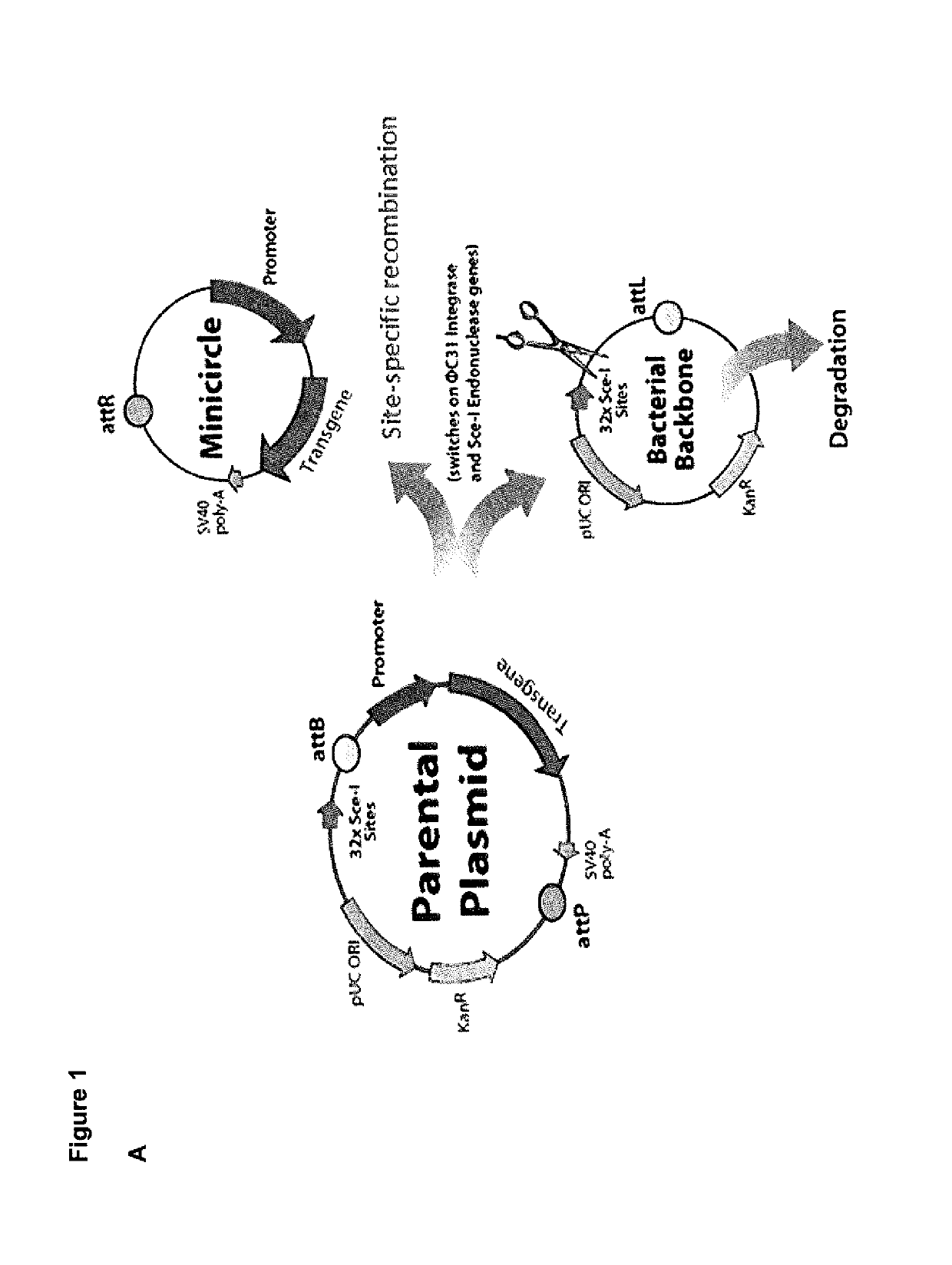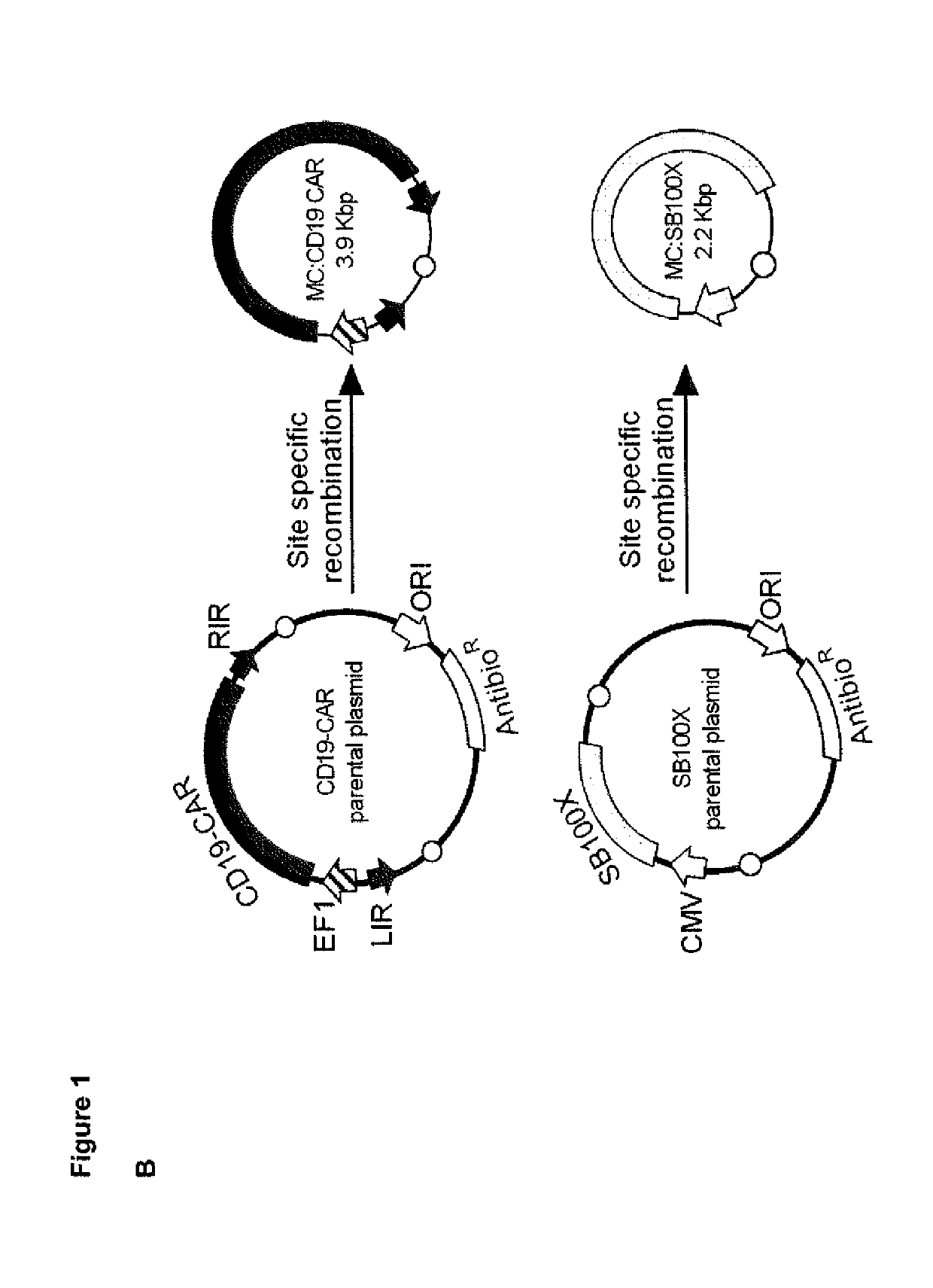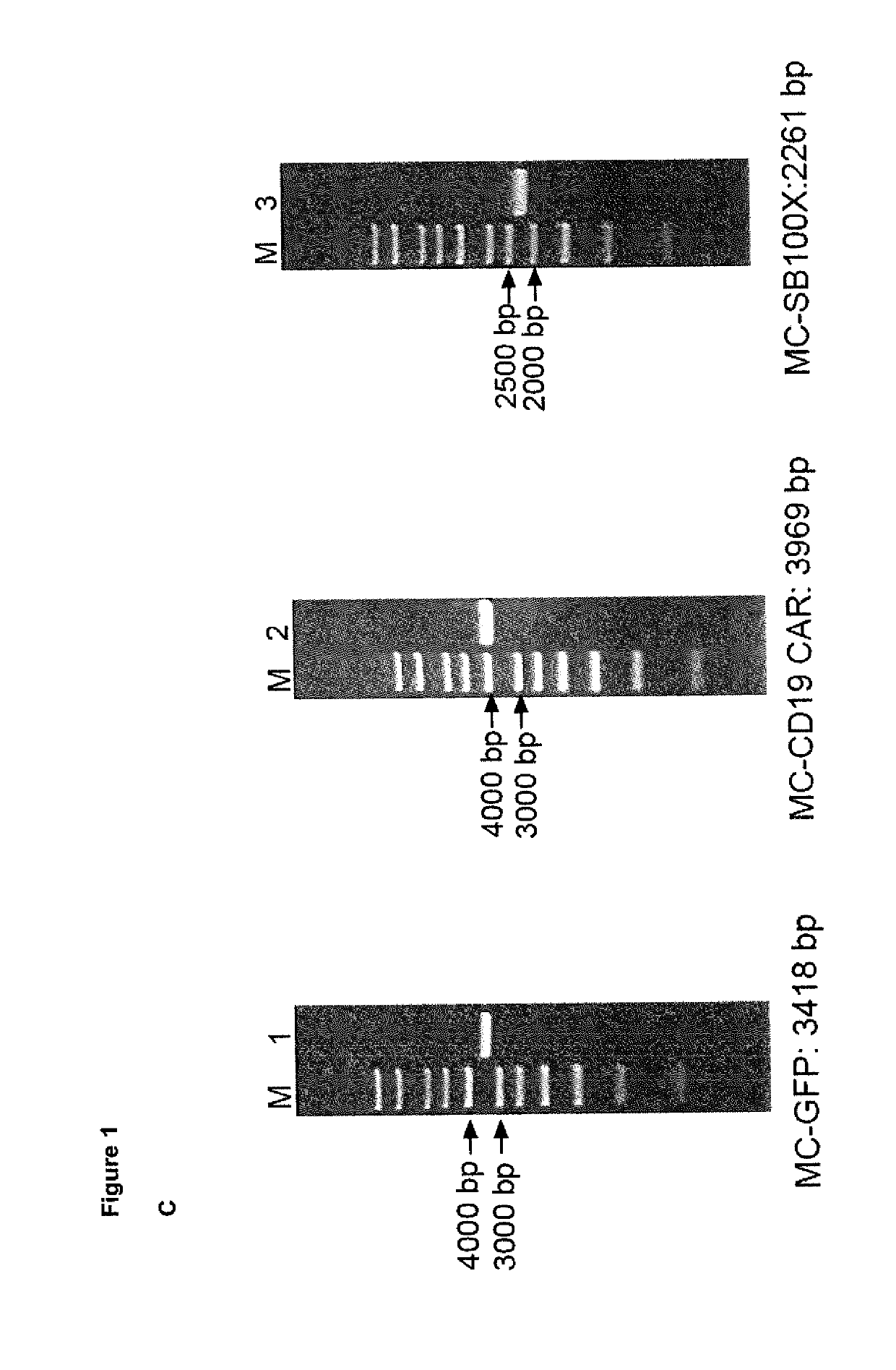A method for high level and stable gene transfer in lymphocytes
a gene transfer and high-level technology, applied in the field of high-level stable gene transfer in lymphocytes, can solve the problems of unmatched efficiency, flexibility, utility and speed of stable integration of transgenes into lymphocytes and other mammalian cells, and achieves the effects of low risk, superior safety profile, and high-level stable transposition ra
- Summary
- Abstract
- Description
- Claims
- Application Information
AI Technical Summary
Benefits of technology
Problems solved by technology
Method used
Image
Examples
example 1
[0286]Preparation of CAR-modified human CD8+ and CD4+ T cells using sleeping beauty-mediated transposition with mRNA-encoded hyperactive sleeping beauty transposase 100X (SB100X) and minicircle DNA-encoded eGFP or CD19-CAR transgenes.
[0287]Materials and Methods:
[0288]Human Subjects
[0289]Blood samples were obtained from healthy donors who provided written informed consent to participate in research protocols approved by the Institutional Review Board of the University of Würzburg (Universitätsklinikum Würzburg, UKW). Peripheral blood mononuclear cells (PBMC) were isolated by centrifugation over Ficoll-Hypaque (Sigma, St. Louis, Mo.).
[0290]Cell Lines
[0291]293T cells (ATCC: CRL-11268, American Type Culture Collection, Manassas, Va.) were cultured in Dulbecco's modified Eagle's medium supplemented with 10% fetal calf serum and 100 U / ml penicillin / streptomycin. K562 (ATCC: CCL-243), K562 / ROR1, K562 / CD19, Raji (ATCC: CCL-86), JeKo-1 (ATCC: CRL-3006), and JeKo-1-ffluc cells were cultured i...
example 2
Beauty-Mediated Transposition with mRNA-Encoded Hyperactive Sleeping Beauty Transposase 100X (SB100X) and Minicircle DNA-Encoded CD19-CAR Transgenes in Non-Activated T Cells
[0336]Materials and Methods:
[0337]Human Subjects
[0338]Peripheral blood was obtained from healthy donors after written informed consent to participate in research protocols approved by the Institutional Review Board of the University of Wûrzburg.
[0339]Construction of Transposon and Lentiviral Vectors
[0340]A cassette with EF1 / HTLV hybrid promotor, Kozak and eGFP sequence followed by a Stop codon was synthesized (GeneArt) and subcloned into the pT2 / HB transposon donor vector (Addgene, #26557). Then, eGFP was replaced with a gene encoding a CD19-CAR (FMC63 targeting domain, IgG4-Fc Hinge spacer, CD3zeta and 4-1BB costimulation) in cis with a T2A element and truncated epidermal growth factor receptor (EGFRt), derived from the previously described lentiviral vector epHIV7Ref. 27, 28. The pCMV(CAT)T7-SB100X vector was o...
example 3
Beauty-Mediated Transposition with Minicircle DNA-Encoded Hyperactive Sleeping Beauty Transposase 100X (SB100X) and Minicircle DNA-Encoded CD19-CAR Transgenes in Non-Activated T Cells
[0351]Materials and Methods:
[0352]Human Subjects
[0353]Peripheral blood was obtained from healthy donors after written informed consent to participate in research protocols approved by the Institutional Review Board of the University of Würzburg.
[0354]Construction of Transposon and Lentiviral Vectors
[0355]A cassette with EF1 / HTLV hybrid promotor, Kozak and eGFP sequence followed by a Stop codon was synthesized (GeneArt) and subcloned into the pT2 / HB transposon donor vector (Addgene, #26557). Then, eGFP was replaced with a gene encoding a CD19-CAR (FMC63 targeting domain, IgG4-Fc Hinge spacer, CD3zeta and 4-1BB costimulation) in cis with a T2A element and truncated epidermal growth factor receptor (EGFRt), derived from the previously described lentiviral vector epHIV7Ref. 27, 28. The pCMV(CAT)T7-SB100X ve...
PUM
| Property | Measurement | Unit |
|---|---|---|
| volume | aaaaa | aaaaa |
| volume | aaaaa | aaaaa |
| volume | aaaaa | aaaaa |
Abstract
Description
Claims
Application Information
 Login to View More
Login to View More - R&D
- Intellectual Property
- Life Sciences
- Materials
- Tech Scout
- Unparalleled Data Quality
- Higher Quality Content
- 60% Fewer Hallucinations
Browse by: Latest US Patents, China's latest patents, Technical Efficacy Thesaurus, Application Domain, Technology Topic, Popular Technical Reports.
© 2025 PatSnap. All rights reserved.Legal|Privacy policy|Modern Slavery Act Transparency Statement|Sitemap|About US| Contact US: help@patsnap.com



